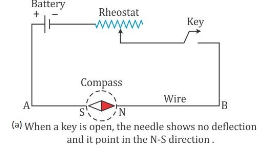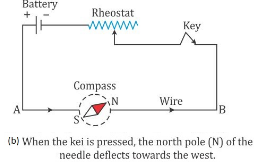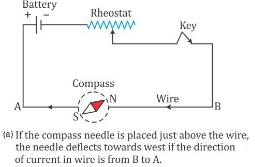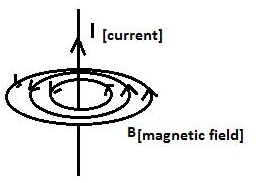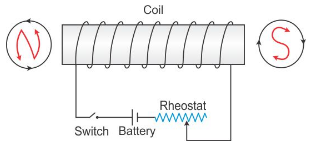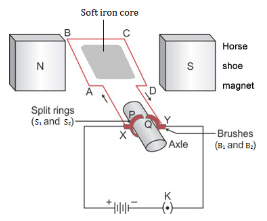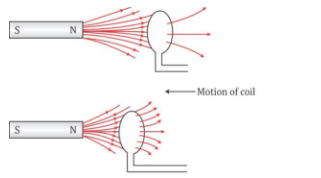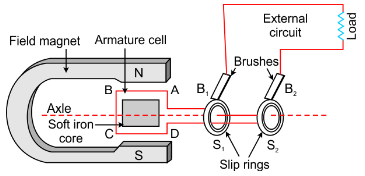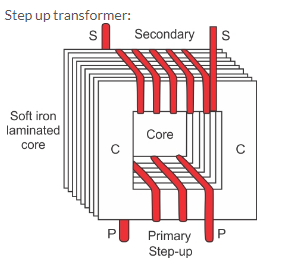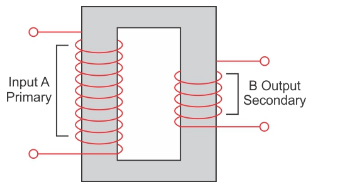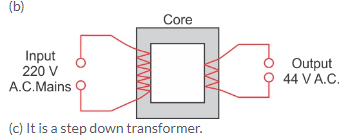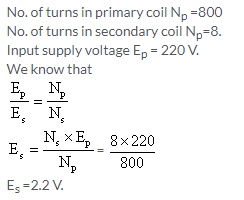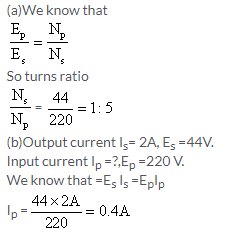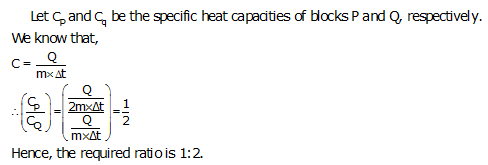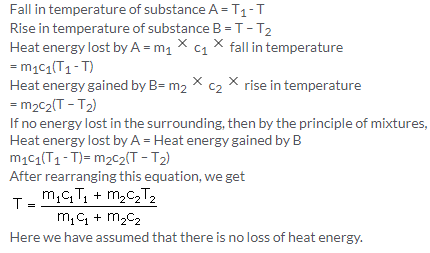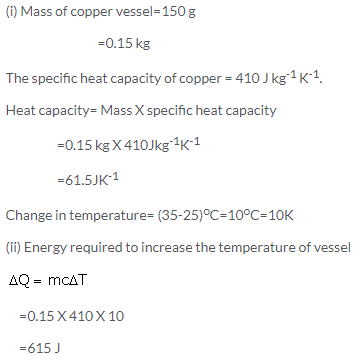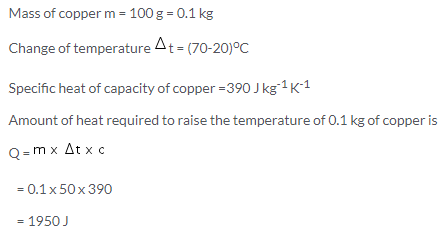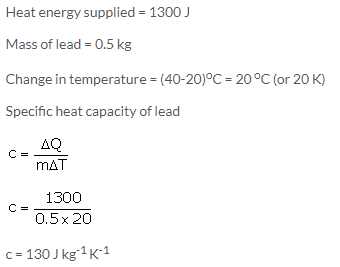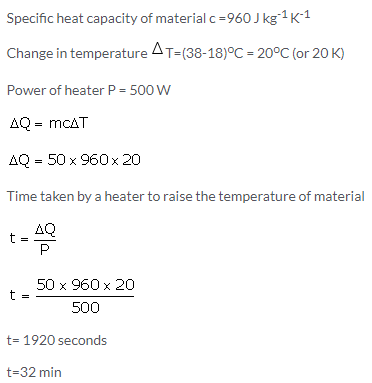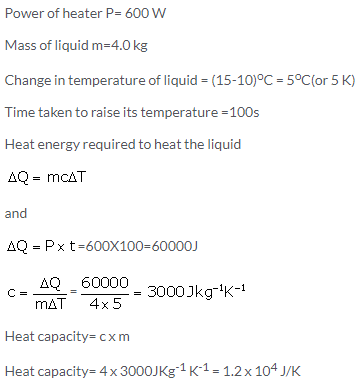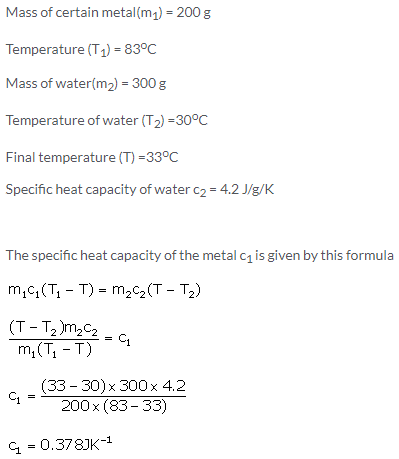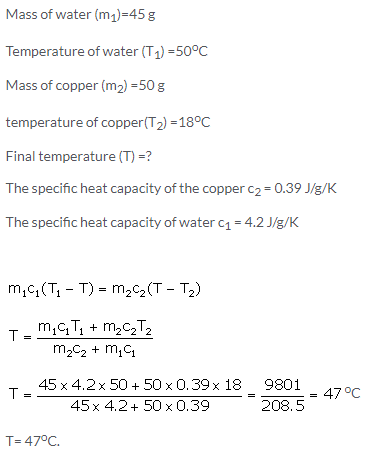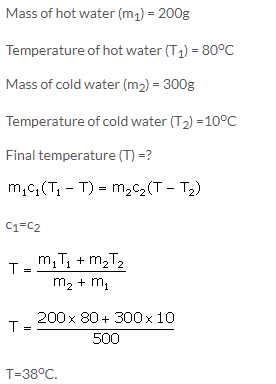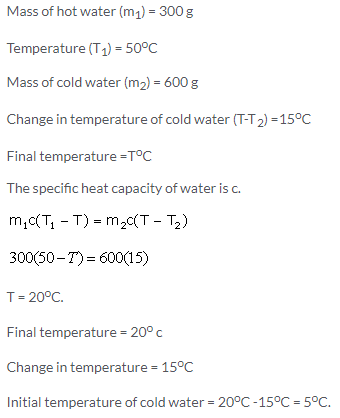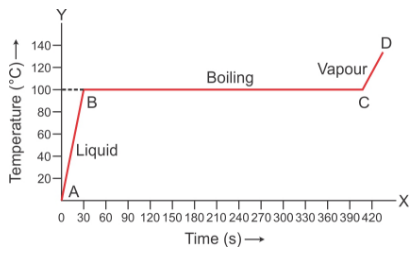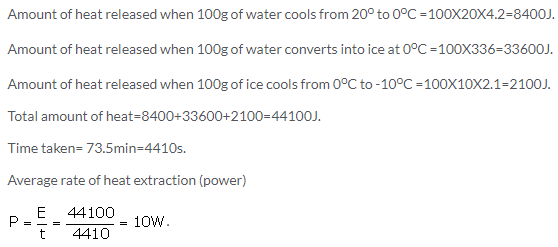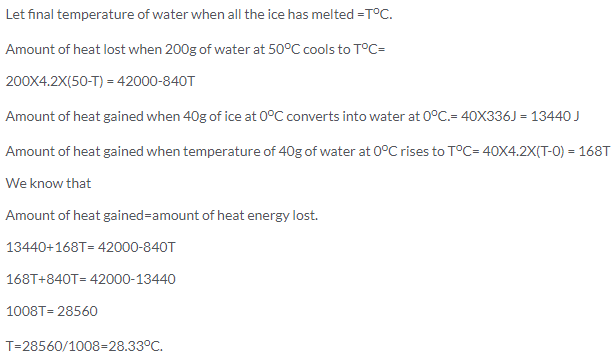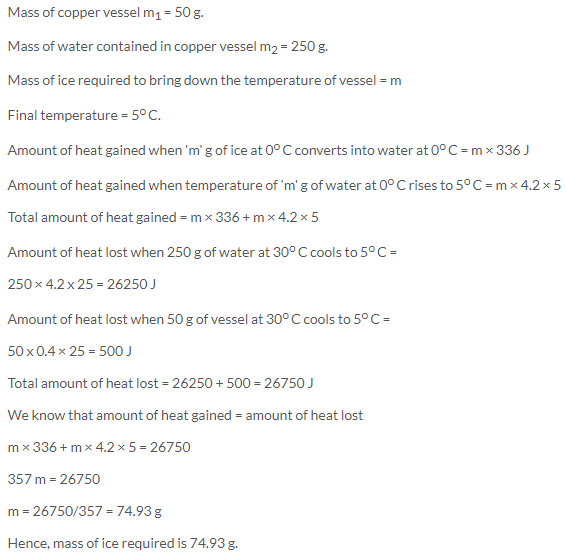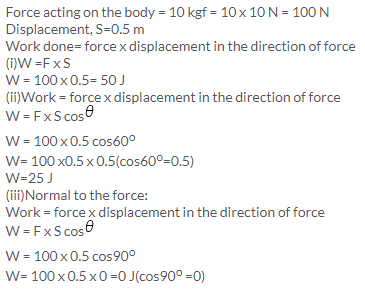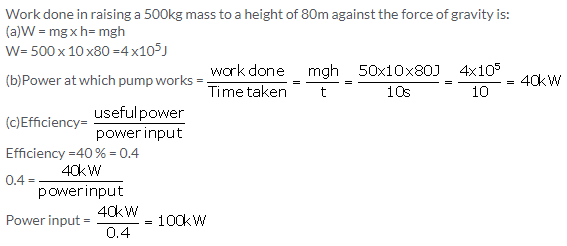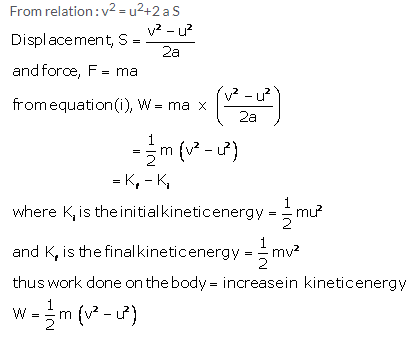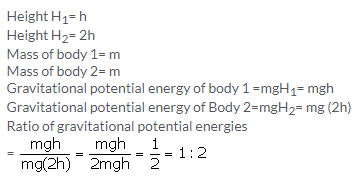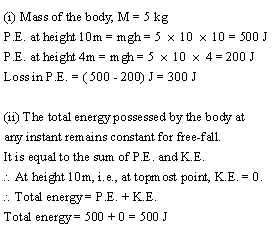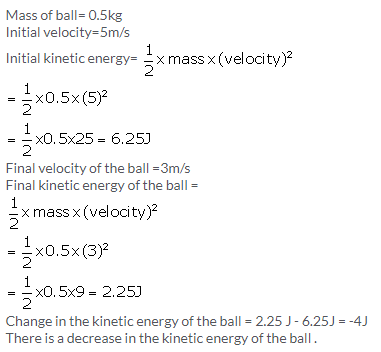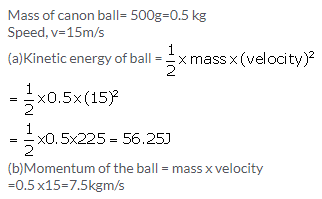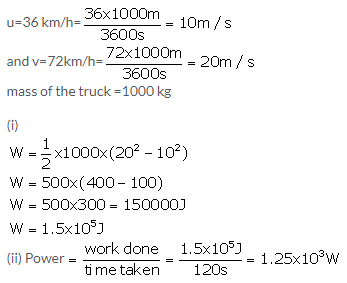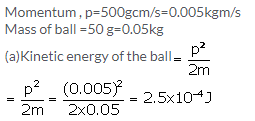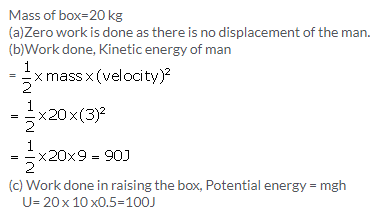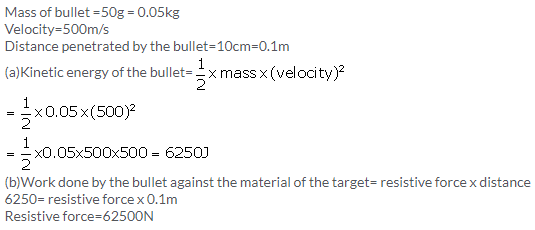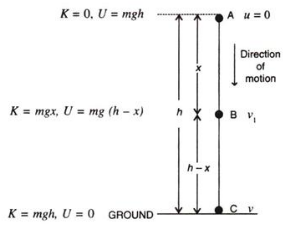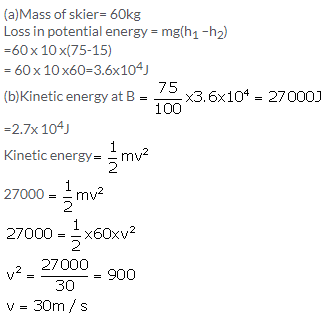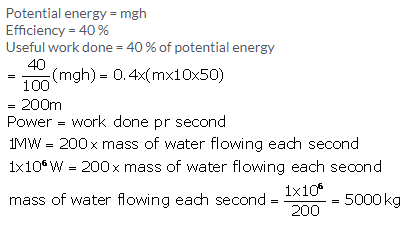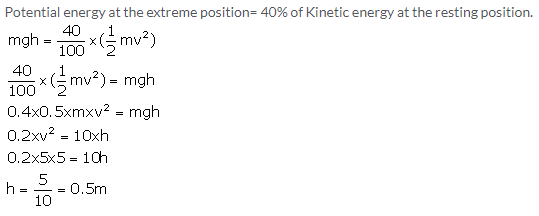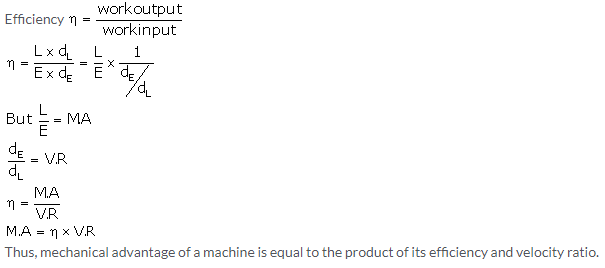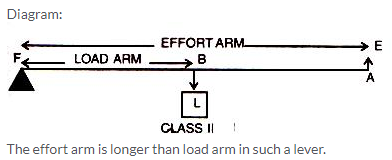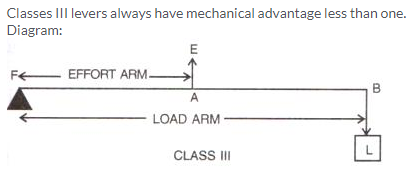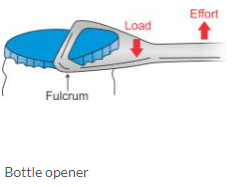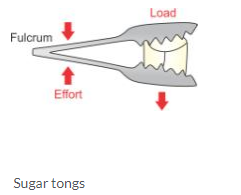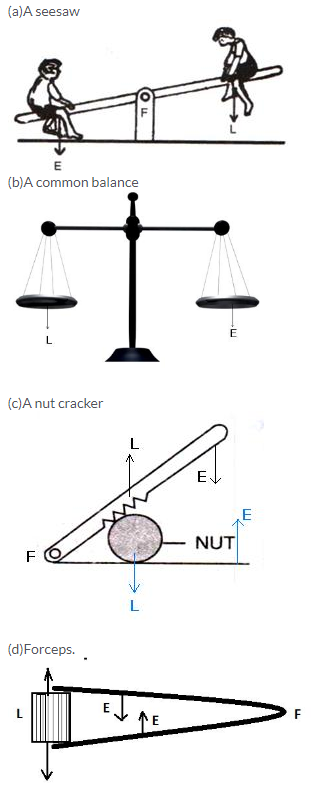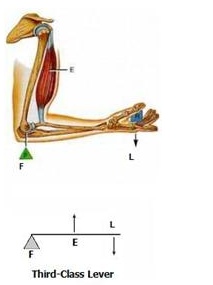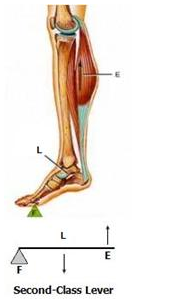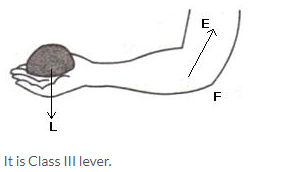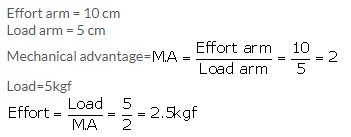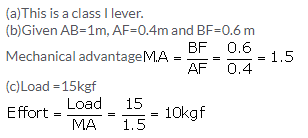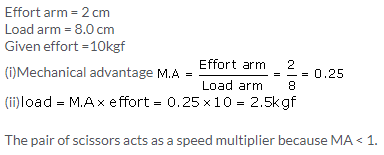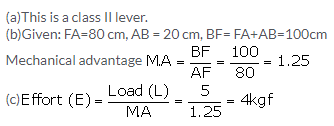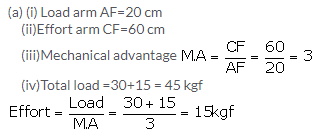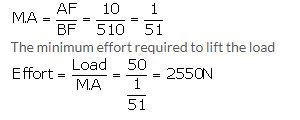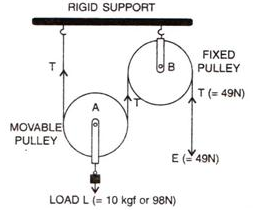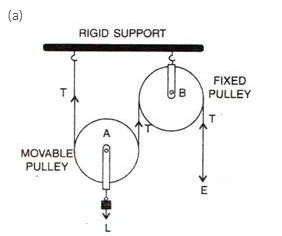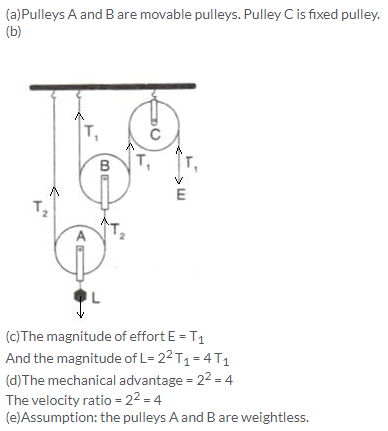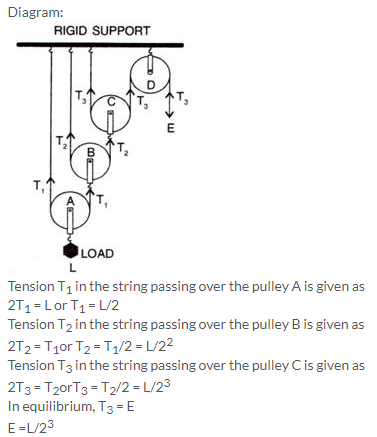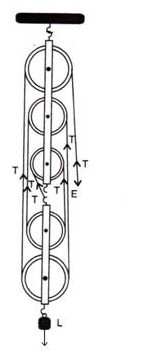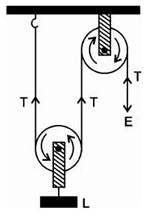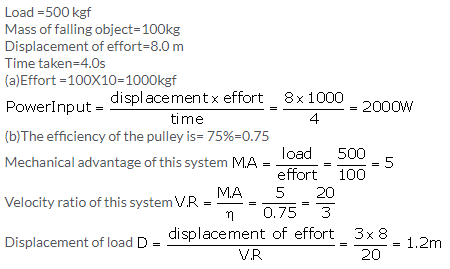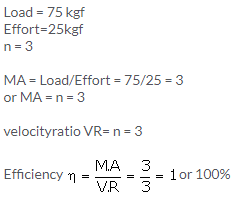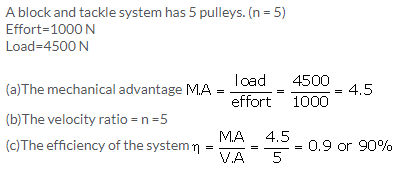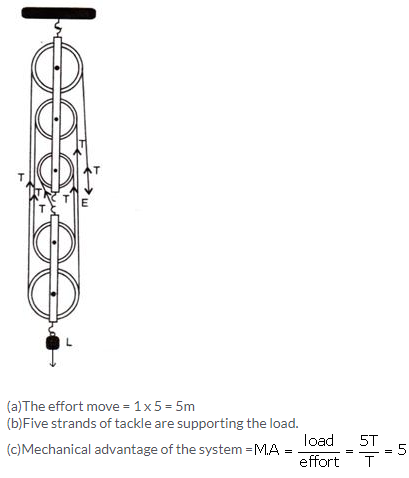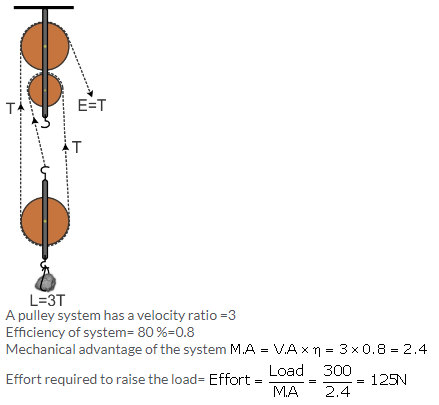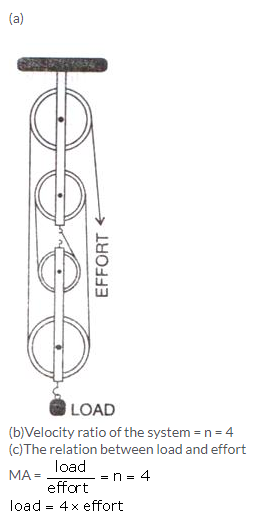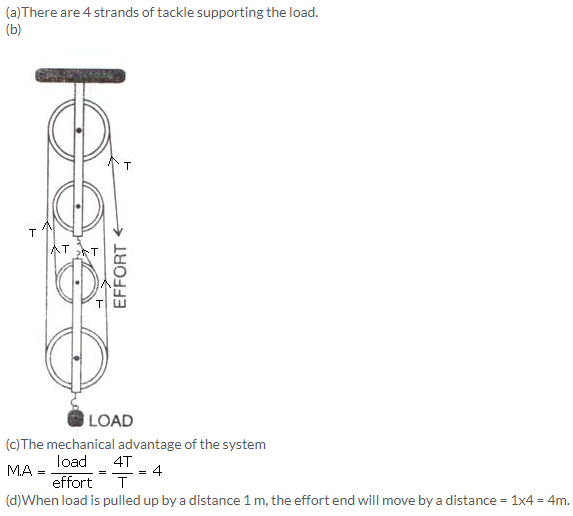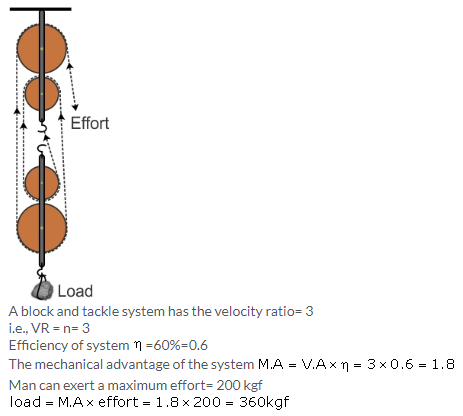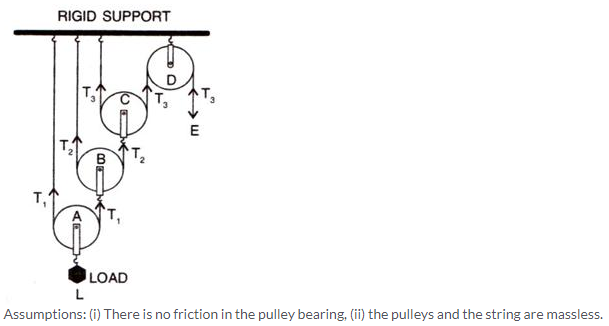Selina Concise Physics Class 10 ICSE Solutions Electrical Power and Household Circuits
APlusTopper.com provides step by step solutions for Selina Concise ICSE Solutions for Class 10 Physics Chapter 9 Electrical Power and Household Circuits. You can download the Selina Concise Physics ICSE Solutions for Class 10 with Free PDF download option. Selina Publishers Concise Physics for Class 10 ICSE Solutions all questions are solved and explained by expert teachers as per ICSE board guidelines.
Download Formulae Handbook For ICSE Class 9 and 10
ICSE SolutionsSelina ICSE Solutions
Selina ICSE Solutions for Class 10 Physics Chapter 9 Electrical Power and Household Circuits
Solution 1.
The electric power is generated at 11 KV, 50Hz at the power generating station.
Solution 2.

At a power generating station, the electric power is generated at 11 kV. From here, the alternating voltage is transmitted to the grid sub-station and stepped up to 132 kV using a step-up transformer. It is then transmitted to the main sub-station where the voltage is stepped down to 33 kV using a step-down transformer and is then transmitted to the intermediate sub-station. At the intermediate sub-station, the voltage is stepped down to 11 kV using a step-down transformer and is transmitted to the city sub-station, where the voltage is further stepped down to 220 V and is supplied to our houses.
Solution 3.
Electric power from the generating station is transmitted at 11 kV because voltage higher than this causes insulation difficulties, while the voltage lower than this involves high current and loss of energy in form of heat (I2Rt).
Solution 4.
At 220 V of voltage and 50 Hz of frequency, the a.c. is supplied to our houses.
Solution 5.
(a) Step-up transformer
(b) Step-down transformer
Solution 6.
(a) The three connecting wires used in a household circuit are:
- Live (or phase) wire (L),
- Neutral wire (N), and
- Earth wire (E).
(b) Among them neutral and earth wires are at the same potential.
(c) The switch is connected in the live wire.
Solution 7.
Before the electric line is connected to the meter in a house, a fuse of rating (≈ 50 A) is connected in the live wire at the pole or just before the meter. This fuse is called the pole fuse.
Its current rating is ≈ 50 A.
Solution 8.
- After the company fuse, the cable is connected to a kWh meter and from this meter; connections are made to the distribution board through a main fuse and a main switch.
- Main fuse is connected in the live wire and in case of high current it gets burnt and cut the connections to save appliances.
- Main switch is connected in the live and neutral wires. It is used to cut the connections of the live as well as the neutral wires simultaneously from the main supply.
Solution 9.
The electric meter in a house measures the electrical energy consumed in kWh.
Its value in S.I. unit is 1kWh = 3.6 x 106J.
Solution 10.
The main fuse in a house circuit is connected on the distribution board, in live wire before the main switch.
Solution 12.

Advantages of ring system over tree system
- In a ring system the wiring is cheaper than tree system.
- In ring system the sockets and plugs of same size can be used while in a tree system sockets and plugs are of different size.
- In ring system, each appliance has a separate fuse due to which if there is a fault and the fuse of one appliance burns it does not affect other appliances; while in a tree system when fuse in one distribution line blows, it disconnects all the appliances connected to that distribution circuit.
Solution 13.

Solution 14.
All the electrical appliances in a building should be connected in parallel at the mains, each with a separate switch and a separate fuse connected in the live wire so that the switching on or off in a room has no effect on other lamps in the same building.
Solution 16.
In set A, the bulbs are connected in series. Thus, when the fuse of one bulb blows off, the circuit gets broken and current does not flow through the other bulbs also.
In set B, the bulbs are connected in parallel. Thus, each bulb gets connected to its voltage rating (= 220 V) and even when the fuse of one bulb blows off, others remain unaffected and continue to glow.
Solution 1 (MCQ).
The main fuse is connected in live wire.
Hint: The main fuse is connected in live wire so that if the current exceeds its rating, the fuse melts and breaks the circuit; thus, preventing the excessive current from flowing into the circuit.
Solution 2 (MCQ).
Electrical appliances in a house are connected in parallel.
Hint: On connecting the electrical appliances in parallel, each appliance works independently without being affected whether the other appliance is switched on or off.
Solution 3 (MCQ).
Energy
Hint: The electric meter in a house records the amount of electrical energy consumed in a house.
Exercise 9(B)
Solution 1.
An electric fuse is a safety device, which is used to limit the current in an electric circuit. The use of fuse safeguards the circuit and appliances connected in that circuit from being damaged.
An alloy of lead and tin is used as a material of fuse because it has low melting point and high resistivity.
Solution 2.
‘Fuse’ is used to protect electric circuits from overloading and short circuiting. It works on heating effect of current.
Solution 3.
(a) A fuse is a short piece of wire of material of high resistance and low melting point.
(b) A fuse wire is made of an alloy of lead and tin. If the current in a circuit rises too high, the fuse wiremelts
(c) A fuse is connected in series with the live wire.
(d) Higher the current rating, Thicker is the fuse wire.
Solution 4.
The fuse wire is fitted in a porcelain casing because porcelain is an insulator of electricity.
Solution 5.
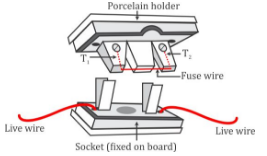
Solution 6.
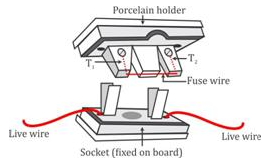
Solution 7.
The fuse wire is always connected in the live wire of the circuit because if the fuse is put in the neutral wire, then due to excessive flow of current when the fuse burns, current stops flowing in the circuit, but the appliance remains connected to the high potential point of the supply through the live wire. Now if a person touches the appliance, he may get a shock as the person will come in contact with the live wire through the appliance.
Solution 8.
The 20 A fuse wire will be thicker so that its resistance be low.
Solution 9.
It means that the line to which this fuse is connected has a current carrying capacity of 5 A.
Solution 10.
The safe limit of current which can flow through the electrical appliance is I = P/V = 5000/200 = 25 A; which is greater than 8 A. So, such fuse cannot be used.
Solution 11.

Solution 12.
A switch is an on-off device for current in a circuit (or in an appliance). The switch should always be connected in the live wire so that the appliance could be connected to the high potential point through the live wire. In this position the circuit is complete as the neutral wire provides the return path for the current. When the appliance does not work i.e., in off position of the switch, the circuit is incomplete and no current reaches the appliance.
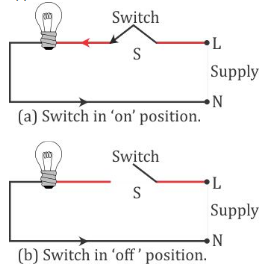
On the other hand, if switch is connected in the neutral wire, then in ‘off’ position, no current passes through the bulb. But the appliance remains connected to the high potential terminal through the live wire.
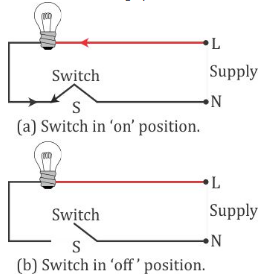
Thus, if the switch is connected in the neutral wire, it can be quite deceptive and even dangerous for the user.
Precaution while handling a switch: A switch should not be touched with wet hands.
Solution 13.
A switch should not be touched with wet hands. If water reaches the live wire, it forms a conducting layer between the hand and the live wire of the switch through which the current passes to the hand and the person may get a fatal shock.
Solution 14.
Let a switch S1 be fitted at the bottom and a switch S2 at the top of the staircase. Fig. (a) shows the off position of the bulb.
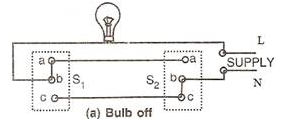
The bulb can now be switched on independently by either the switch S1 or the switch S2. If the switch S1 is operated, the connection ‘ab’ is changed to ‘bc’, which completes the circuit and the bulb lights up [Fig. (b)].

Similarly, on operating the switch S2, the connection ‘bc’ changes to ‘ba’, which again completes the circuit [Fig. (c)].

Similarly if the bulb is in on position as shown in Fig. (b) or (c), one can switch off the bulb either from the switch S1 or the switch S2.
Solution 15.
All electrical appliances are provided with a cable having a plug at one end to connect the appliance to the electric supply.
In this three way pin plug, the top pin is for earthing (E), the live pin (L) in on the left and the neutral pin (N) is on the right.
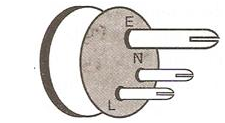
Solution 16.
The three pins in the plug are labelled as

Here E signifies the earth pin,
L is for live wire, and
N is for neutral wire.
- The earth pin is made long so that the earth connection is made first. This ensures the safety of the user because if the appliance is defective, the fuse will blow off. The earth pin is thicker so that even by mistake it cannot be inserted into the hole for the live or neutral connection of the socket.
- The pins are splitted at the end to provide spring action so that they fit in the socket holes tightly.
Solution 17.

Solution 18.
(a) 1 – Earth, 2 – Neutral, 3 – Live
(b) Terminal 1 is connected to the outer metallic case of the appliance.
(c) The fuse is connected to live wire joined to 3 so that in case of excessive flow of current fuse melts first and breaks down the circuit to protect appliances.
Solution 19.
Local earthing is made near kWh meter. In this process a 2 – 3 metre deep hole is dug in the ground. A copper rod placed inside a hollow insulating pipe, is put in the hole. A thick copper plate of dimensionsis 50 cm x 50 cm welded to the lower end of the copper rod and it is buried in the ground. The plate is surrounded by a mixture of charcoal and salt to make a good earth connection.
To keep the ground damp, water is poured through the pipe from time to time. This forms a conducting layer between the plate and the ground. The upper end of the copper rod is joined to the earth connection at the kWh meter.
Solution 20.
If the live wire of a faulty appliance comes in to direct contact with the metallic case due to some reason then the appliance acquires the high potential of live wire. This may results in shock if any person touches the body of appliance. But if the appliance is earthed then as soon as the live wire comes in to contact with the metallic case, high current flows through the case to the earth. The fuse connected to the appliance will also blows off, so the appliance get disconnected.
Solution 21.
(a) The fuse must be connected in the live wire only. If the fuse is in the neutral wire, then although the fuse burns due to the flow of heavy current, but the appliance remains at the supply voltage so that on touching the appliance current flows through the appliance to the person touching it.
(b) Metallic case of the appliance should be earthed.
Solution 22.
The paint provides an insulating layer on the metal body of the appliance. To make earth connection therefore, the paint must be removed from the body part where connection is to be made.
Solution 23.
- According to new international convention
- Live wire is brown in colour.
- Neutral is light blue and
- Earth wire is yellow or green in colour.
Solution 25.
(a) The three wires are: Live wire, Earth wire and Neutral wire.
(b) The heating element of geyser should be connected to live wire and neutral wire.
(c) The metal case should be connected to earth wire.
(d) The switch and fuse should be connected to live wire.
Solution 26.
One may get an electric shock from an electrical gadget in the following two cases:
- If the fuse is put in the neutral wire instead of live wire and due to fault, if an excessive current flows in the circuit, the fuse burns, current stops flowing in the circuit but the appliance remains connected to the high potential point of the supply through the live wire. In this situation, if a person touches the faulty appliance, he may get an electric shock as the person will come in contact with the live wire through the appliance.
Preventive measure: The fuse must always be connected in the live wire. - When the live wire of a faulty appliance comes in direct contact with its metallic case due to break of insulation after constant use (or otherwise), the appliance acquires the high potential of the live wire. A person touching it will get a shock because current flows through his body to earth.
Preventive measure: Proper ‘earthing’ of the electric appliance should be done.
Solution 27.
Power circuit carries high power and costly devices. If there is some unwanted power signal (noise) in the wire it can damage the device. To reduce this effect earth is necessary.
Lighting circuit carries low power (current).So, we ignore the earth terminal.
Solution 28.
A high tension wire has a low resistance and large surface area.
Solution 29.
To carry larger current, the resistance of the wire should be low, so its area of cross section should be large. Therefore 15 A current rated wire will be thicker.
Solution 30.
(a) Switches 2 and 3.
(b) The lamps are connected in series.
Solution 31.
(a)

(b)
| Wire no. | Wire name | Colour (Old convention) | Colour (New convention) |
| 1 | Neutral wire | Black | Light blue |
| 2 | Earth wire | Green | Green or yellow |
| 3 | Live wire | Red | Brown |
(c) The bulbs are joined in parallel.
Solution 1 (MCQ).
5 A
Hint: The electric wiring for light and fan circuit uses a thin fuse of low current rating (= 5 A) because the line wire has a current carrying capacity of 5 A.
Solution 2 (MCQ).
A switch must be connected in live wire.
Explanation: A switch must be connected in live wire, so that when it is in ‘off’ position, the circuit is incomplete and no current reaches the appliance through the live wire.
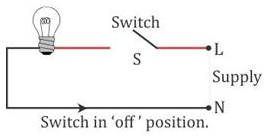
More Resources for Selina Concise Class 10 ICSE Solutions
